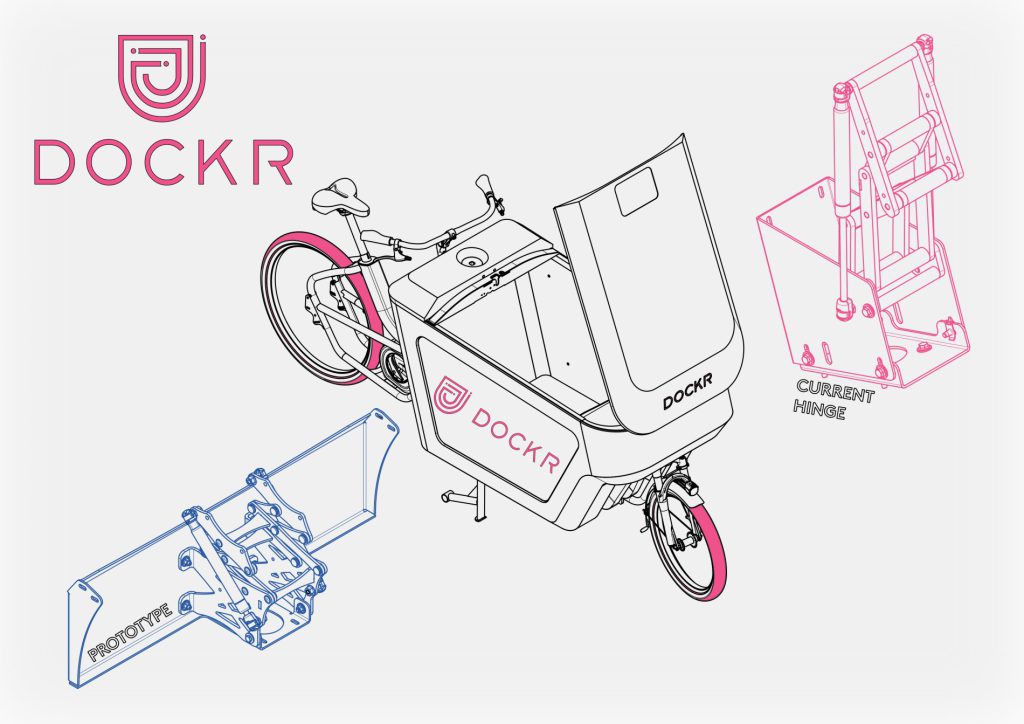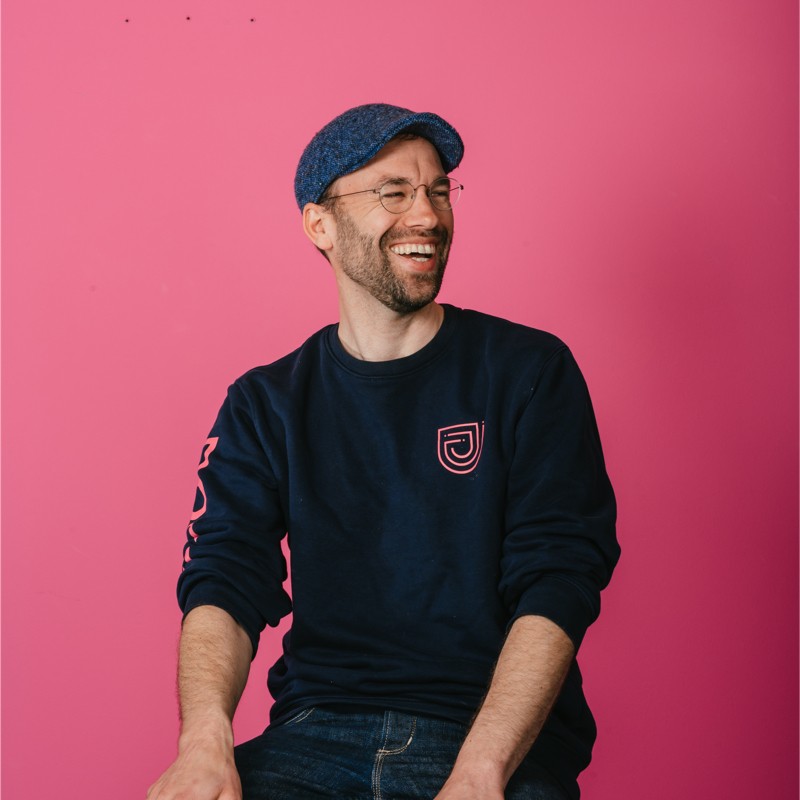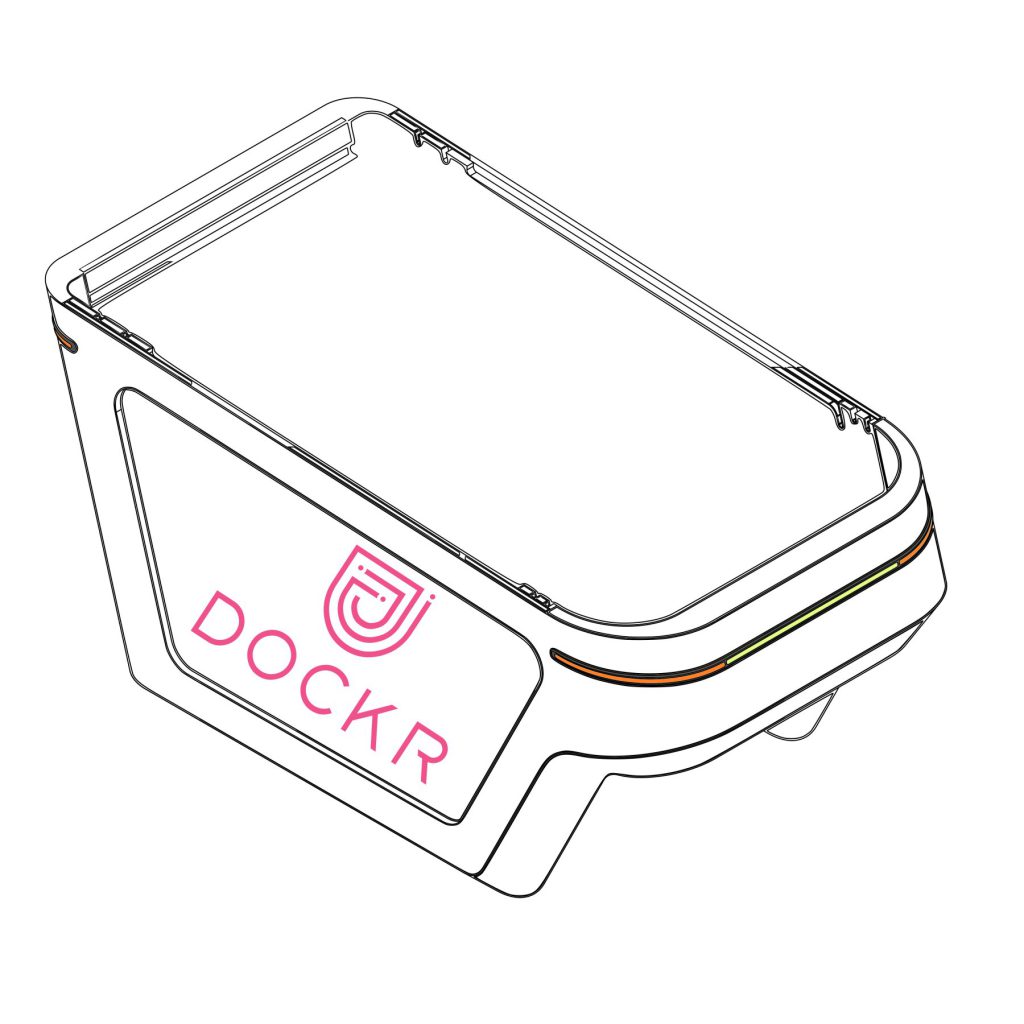Product Development: Thinking outside the box

Jurjen Vellinga is Product Development Lead at DOCKR, a Netherlands-based company offering businesses access to cargo bikes and light electric vehicles on a flexible, subscription-style basis.
Jurjen’s easy-going nature – he’s a self-confessed bike nerd – belies a relentless focus on detail which has helped him see several high-impact design projects come to fruition in his short time at DOCKR.
We sat down with him to discuss some of the innovations he’s most proud of, and find out what they mean for DOCKR’s customers and the wider cargo bike industry.
Nuts and bolts
Sixteen years of experience in the cycling industry and engineering has prepared Jurjen Vellinga for the role he took when he joined DOCKR in December 2021. In it, he works closely together with Co-founder and Head of Product and Innovation Kees-Jan Blankestijn, who liaises with clients and takes a wider view (see part two in this series of articles for an interview with Kees Jan). Meanwhile, Jurjen describes his role as “taking care of the nuts and bolts” – in other words: the details.
DOCKR’s concept – unique on the market when they appeared in 2018 – has seen them grow from strength to strength; there are now over 150 customers on their books riding a fleet of 3000+ cargo bikes and light electric vehicles across the Netherlands, Germany and Belgium. And there are plans to expand to more countries. It’s a concept that puts different demands on the cargo bikes than those sold or leased in the normal way. A DOCKR customer demands not only flexibility, but minimum down-time – so it’s up to DOCKR to make sure that their vehicles run smoothly at all times.
What does that mean day-to-day? Custom solutions that are even more durable than the already excellent models rolling off the production lines at Urban Arrow, Cargo Cycling and Kettler Alu Rad. Solutions that are even more sturdy and street-ready.
Quite the challenge, and that’s precisely why DOCKR has set up their own product development team. “It’s not like ordering something online” states Jurjen plainly. “You have to visit your manufacturers, make production moulds and everything has to be checked at every stage of the process; visually and otherwise. There are so many small parts; so many details. That’s how we get the quality, get everything going right and make sure we get our end product.”
Boxing clever
The first area this team went to work on was with cargo boxes. “Why did we start on the boxes? Out of necessity” explains Jurjen. “We started out specifying flightcase-style boxes for our Urban Arrow Ls, but in a collision an aluminium box doesn’t bounce back. They’re labour-intensive and expensive to repair, so we found ourselves writing off a lot of boxes. That’s unsustainable – both financially and environmentally. We wanted our bikes to last as long as possible.”

In November 2021, DOCKR announced the addition of Kettler Alu Rad cargo bikes to their fleet. The development team was already hard at work on a DOCKR box for the model. “We took what we learned from the development of our Urban Arrow L box and applied it to the Kettler” states Jurjen. “Plus, we’ve also added plenty of extra innovations to it. For instance, we improved the way water ran off the box, preventing water from getting in and damaging cargo. We also revised the lock location to make it more ergonomic and to add water protection.”
DOCKR’s cargo boxes are now made from multiple layers of glued polyurethane foam. “This deforms in a collision and bounces back” explains Jurjen. “It absorbs the impact first, preventing more serious injuries and write-offs.” The team also developed their own, originally designed hinge for the box – an expensive detail. However, the priority in the long-run was that it worked perfectly – even when the box is opened and closed 200 times a day, 7 days a week.
The light within
Another area the team is working on is lighting. “We’re in the end development stage of a lighting package right now. Not only with front and back lighting, but also directional indicators. The idea is simple – allowing riders to keep their hands on the handlebars while signalling. On a cargo bike with a heavy load, that’s really important. You don’t really want to take your hands off when steering in traffic, right?”
There is also a simple rationale behind the placement of the lights, which are mounted on the box. “The normal option for mounting lights is on the bike frame – but this isn’t as wide as the vehicle” says Jurjen. “Because we have a wider-than-normal box, you can mount it on there and still have it visible from all sides. And since we developed the lighting alongside the box, it also deforms with the box in a collision. That’s something I’m really excited about because it means you don’t have lights popping off and needing to be repaired. It’s flexible lighting and while it’s not something that reduces costs directly, it does make things safer, and importantly makes people feel safer too.”
Jurjen is also keen to point out that the lights are as much for the day as for night. “They help with visibility in the day too – and at night the front and rear lights don’t blind.”

Higher spec components
Another, broader area in which DOCKR’s bikes are distinct from factory models is in componentry – much of which is custom specified to a higher level. “Because we own every vehicle in our fleet, keeping control of the total cost of ownership is fundamental to our existence” states Jurjen. “That’s why it’s beneficial for us to spec higher than standard quality parts.”
Why? Because DOCKR’s bikes are used differently. More intensively. “It’s common for our bikes to be ridden in three shifts every day of the week. There’s a big difference between what DOCKR’s bikes go through and how cargo bikes are used by a family, or by an organisation making less rigorous use of them.”
“We’re in a continuous discussion with all our supplying vehicle manufacturers – and what this often means is that not only we get higher spec, but because of the way supply chains work in the cycling industry, the manufacturer then also raises the spec for all customers. For example, we might ask them to make incremental changes, such as enhancing a steering eyelet or headset, or request other individual parts – and some of these changes may then be incorporated into their standard specification.”
“We have a large fleet, which means we can often see patterns better – or at least differently – than manufacturers themselves can. When we give them this feedback, it helps everyone. The same goes for design improvements that lead to shorter, easier maintenance intervals. Because bicycle manufacturers don’t do maintenance, it’s logical that is not the highest priority on their agenda. For us at DOCKR it is of the utmost importance – so we use our close relationships with manufacturers to ensure that there is a focus on design for maintenance from the first conception of a vehicle onwards.”
And what are the most common parts that need replacing? “Worn brake pads and tyres. For things like this we’re leaning towards using stronger parts. Motorcycle parts, even. It makes sense if you think about it – with a full load there’s a lot of force involved.”
Conclusion
It’s clear that through the developments made by Jurjen and his colleagues, DOCKR’s customers – and their customers’ customers – can expect a smoother user experience. All of which helps in the transition from polluting vehicles to cleaner alternatives. But the team is not standing still; Jurjen is already thinking about their next move.
“I think our box at the moment is sustainable in the sense that it lasts long and can withstand impacts. But I want to make it more sustainable in the environmental sense too. Looking at what the end-life of the product is. It’s a really interesting time right now – a lot of new materials are being developed. Could we even make it bio-based and yet keep all of the same functionality?”
Time will tell on that – but for now one thing is certain: DOCKR will continue to push the envelope with their innovations, and that’s a good thing for everyone.
This is the third article in a four-part series going behind the scenes at DOCKR. Don’t forget to check out Part one about DOCKR’s expansion into Germany and Belgium and Part two, which looks at the five trends that will shape the future of mobility.
By Tom Parr of the International Cargo Bike Festival
